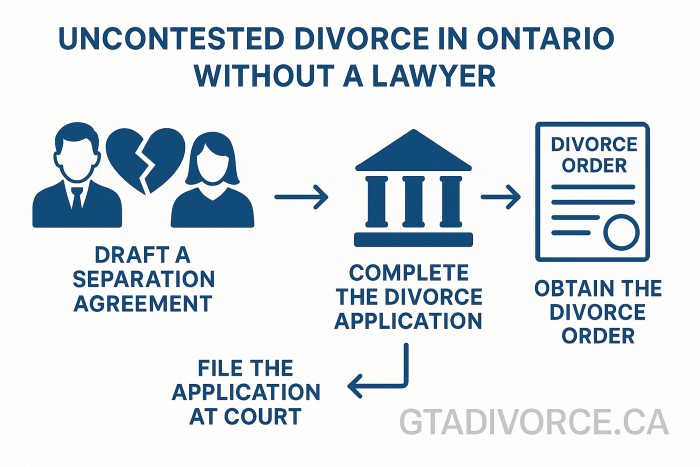So… You’re Thinking About Calling a Family Lawyer?
Let’s be real: the idea of calling a lawyer can feel… heavy. Even saying it out loud to yourself — “I think I need a family lawyer” — kind of stings, doesn’t it? Like you’re crossing some invisible line between this might work itself out and okay, this just got real.
And then, right when you’re stewing in that mix of worry and hesitation, you see it:
Free Consultation.
You pause.
Maybe it’s bait? Maybe it’s a glorified sales pitch?
Or maybe — just maybe — it’s a low-pressure way to start untangling whatever mess you’re in.
Here’s the thing: in Ontario, family law is rarely clean-cut. It’s emotional. It’s complicated. And sometimes, it feels downright impossible to figure out where to start. That’s why this post exists — to help you understand what that “free consultation” really means, and whether it might be your first real step toward peace of mind.
Why Family Law Feels Like a Maze (Because Honestly… It Kind of Is)
Let’s not sugarcoat it. Family law in Ontario covers everything from divorce and child custody to property division and support payments. And each of those categories? Packed with rules, exceptions, timelines, and, yes, a whole lot of emotions.
One moment you’re dividing holiday time with your kids, the next you’re explaining financial details you barely understand. It’s messy because people are messy — and that’s not a bad thing. It just means you might need a little guidance to get through it.
You know what else? You don’t need to be “in crisis” to talk to a lawyer. Some people think they need to wait until everything explodes. But in reality, the earlier you speak to someone, the more options you’ll probably have.
What Does “Free Consultation” Actually Mean?
Ah, the million-dollar question (except it’s free — so zero-dollar, technically).
A free consultation is typically a 15- to 30-minute conversation where you can:
- Briefly explain your situation
- Ask general questions about your legal options
- Get a sense of how the lawyer works
Here’s what it doesn’t mean:
- Free legal representation
- Unlimited time to go over every detail
- A full strategy with no strings attached
It’s kind of like a coffee date before a relationship. You’re both feeling each other out — no commitment yet. And just like dating, if it feels off? You walk.
What to Bring (And What to Leave at Home)
Okay, so you’ve booked the consultation. Now what?
Here’s a short, no-nonsense list of what to bring:
- Any court documents you’ve received or filed
- Marriage certificate (if applicable)
- Notes on key dates (marriage, separation, kids’ birthdays)
- Recent financial statements
- A list of questions — even the “dumb” ones (spoiler: none are dumb)
But here’s the big one: bring your story — in whatever shape it’s in.
You might cry. You might ramble. That’s okay. Family lawyers are used to that. In fact, it’s part of the job — decoding human pain and turning it into legal action.
And what should you leave at home? Shame. Guilt. That inner voice telling you not to make waves. This is your life. You’re allowed to ask questions about it.
Questions You Should Absolutely Ask (Seriously, Don’t Hold Back)
If the consultation is like a first date, then think of these as the “must-ask” questions before agreeing to a second one:
- How do you charge — hourly, flat rate, or some mix?
- Who will I actually be talking to — you, or a paralegal?
- What kind of cases like mine have you handled?
- What’s your approach to conflict — bulldozer or bridge-builder?
- How quickly do you usually respond to emails or calls?
You’re not being annoying — you’re being smart. It’s your family, your money, your peace of mind.
Understanding Costs Without Getting Lost in Legal Jargon
Legal fees can feel like a black hole. But they don’t have to be.
In Ontario, you’ll usually see one of three setups:
- Hourly billing – Common for ongoing matters like divorce or custody.
- Flat fees – More predictable, often used for simple agreements.
- Retainers – Kind of like a prepaid balance you draw from.
And why are some lawyers offering free consultations while others charge $200 for 30 minutes? Simple: marketing, bandwidth, and client strategy. A free consult isn’t a red flag. But how they handle that consult? That tells you everything.
Local Realities: Ontario Isn’t One-Size-Fits-All
Whether you’re in downtown Toronto, rural Sudbury, or a suburb like Whitby — the family law landscape shifts.
In larger cities, you’ll find more lawyers, faster turnaround, but also more formality. In smaller communities, expect longer wait times, more informal processes, and sometimes, tighter-knit networks (which can be good or awkward, depending on the case).
Also, Ontario’s cultural diversity adds another layer. A good lawyer should understand not just the law, but the people it affects — different languages, religious traditions, family structures. If they don’t get that? That’s a sign.
When to Say Yes, and When to Walk Away
So let’s say you’ve had the consultation. Maybe even a couple.
If a lawyer:
- Talks over you
- Avoids clear answers about cost
- Makes big promises with no specifics
- Doesn’t ask questions back
…that’s your cue to walk.
But if they:
- Listen, really listen
- Explain things in plain language
- Make space for your emotions
- Give you timelines and next steps without pressure
…then maybe, just maybe, you found someone who gets it.
Final Thoughts: Calling a Lawyer Doesn’t Mean You’re in Trouble
There’s this weird stigma, especially in tight-knit communities, that calling a lawyer = drama. But honestly? It’s just being smart.
A free consultation isn’t a promise or a plan. It’s a conversation. It’s a flashlight when you’re stuck in a dark room.
Even if you don’t move forward with that lawyer — or with any lawyer — you’ll walk away knowing more than you did before. And sometimes, that’s enough to get you through the next hard day.
Bonus: Quick Checklist Before You Call
Here’s your five-minute prep guide:
- ✔️ Write down your main concern in one sentence
- ✔️ Gather any recent court or legal paperwork
- ✔️ Make a list of important dates
- ✔️ Think of 3 questions you want to ask
- ✔️ Take a deep breath — you’re not alone
Still hesitating? That’s normal. But if you’ve read this far, you probably already know what you need to do.
Go ahead — make the call, fill out the form or book a consultation online here.


